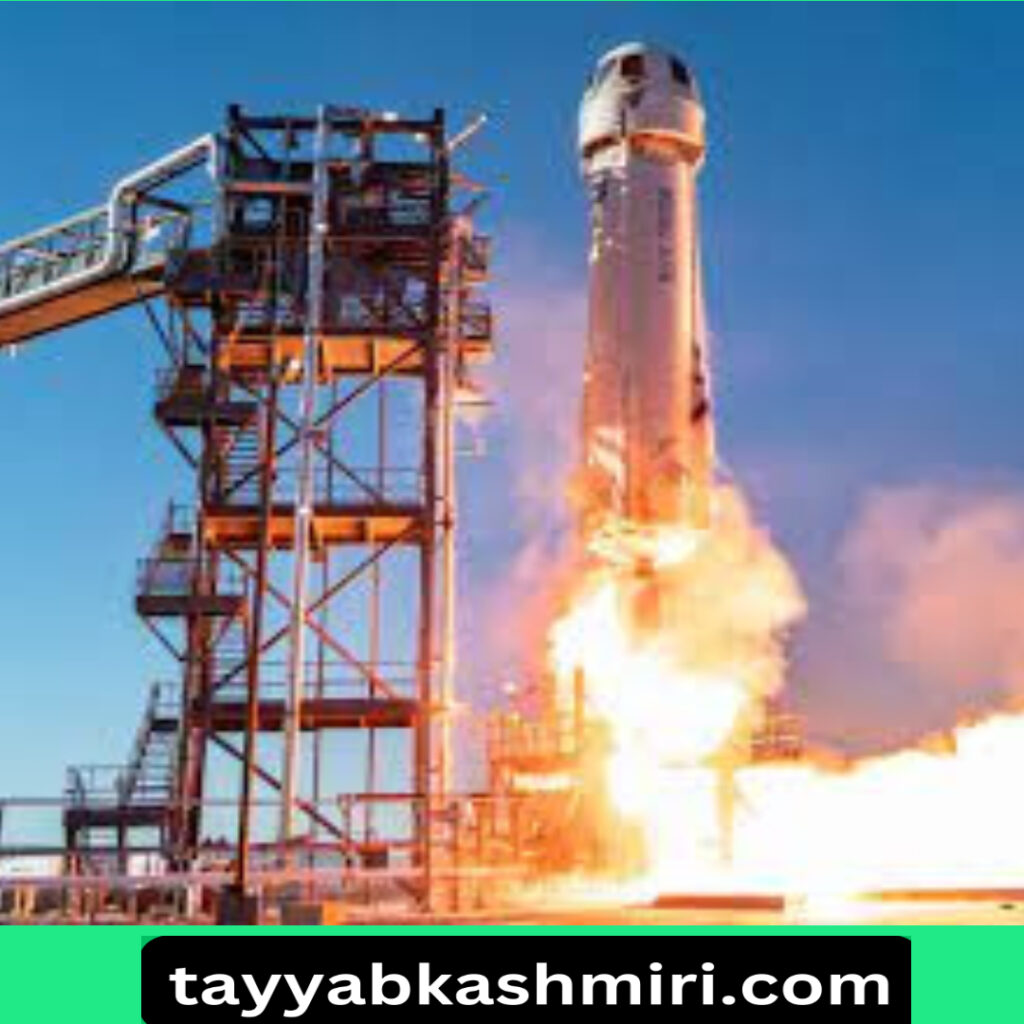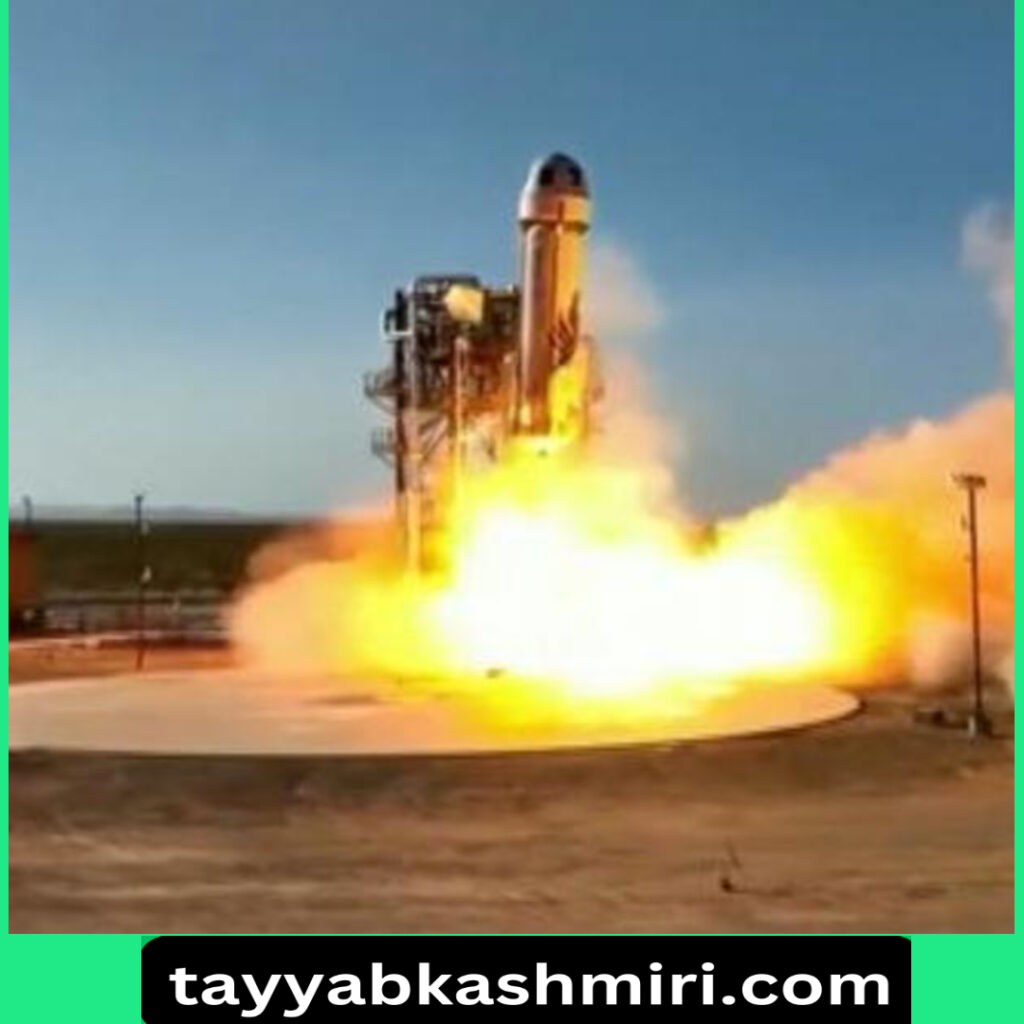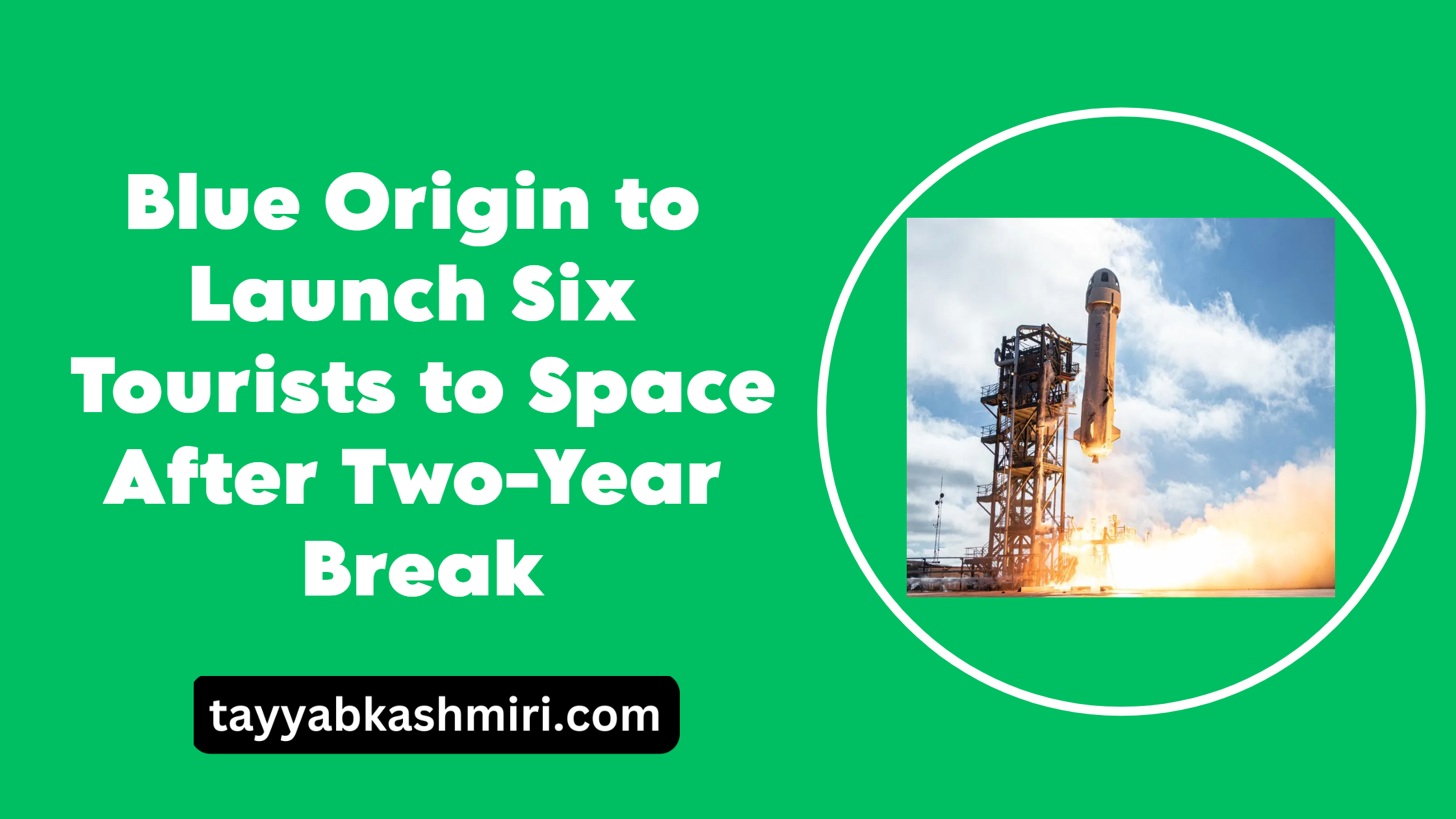Blue Origin to Launch Six Tourists to Space After Two-Year Break

Table of Contents
For More Articles : Visit Here
Blue Origin to Launch Six Tourists to Space After Two-Year Break
Introduction
After a hiatus of almost two years, Blue Origin is gearing up to launch its seventh crewed mission to the edge of space. The private aerospace company, founded by Jeff Bezos, had to halt its space tourism operations following a failed test flight in September 2022. However, with the necessary adjustments made and clearance from the Federal Aviation Administration (FAA), Blue Origin is now ready to resume its suborbital flights, carrying a fresh batch of space enthusiasts on an unforgettable journey.
The Upcoming Mission: NS-25
Launch Details
The upcoming mission, dubbed NS-25 (New Shepard 25), is scheduled for liftoff from Blue Origin’s facilities in West Texas. The launch window opens at 8:30 am CT (9:30 am ET) on Sunday, May 19, 2024, with the actual launch currently set for 8:52 am CT (9:52 am ET). Space enthusiasts from around the world can witness this exciting event live on Blue Origin’s website, with the webcast commencing at 8:12 am CT (9:12 am ET).
The Crew
Blue Origin has carefully selected six individuals to embark on this extraordinary adventure:
- Mason Angel: A venture capitalist with a passion for space exploration.
- Sylvain Chiron: The founder of Brasserie Mont-Blanc, a renowned French brewery.
- Kenneth L. Hess: A software engineer and entrepreneur with a keen interest in space technology.
- Carol Schaller: A retired accountant and avid space enthusiast.
- Gopi Thotakura: An experienced aviator and pilot.
- Ed Dwight: A retired U.S. Air Force captain and the first Black astronaut candidate chosen by President John F. Kennedy in 1961, although he never made it to space during his initial attempt.
At the remarkable age of 90, Ed Dwight will become the oldest person to reach the edge of space, solidifying his place in history as a trailblazer and an inspiration to generations of aspiring astronauts.
The Journey
During the mission, the crew will experience a truly exhilarating ride. The New Shepard rocket will propel them at a blistering speed of over 2,000 miles per hour, three times the speed of sound. As they ascend beyond the Kármán line, which is widely recognized as the boundary between Earth’s atmosphere and outer space (approximately 62 miles or 100 kilometers above the planet’s surface), the passengers will be treated to a few minutes of weightlessness and breathtaking views of our home planet.
The Road to Recovery
The September 2022 Incident
Blue Origin’s journey back to space has been marked by challenges and perseverance. In September 2022, a New Shepard rocket encountered a critical issue during an uncrewed science mission. The rocket faced a phenomenon known as “Max Q,” where the pressure on the vehicle reaches its maximum. A burst of flames erupted, prompting the capsule to safely separate from the rocket using its launch abort system. While the capsule landed safely, the rocket crashed, marking a significant setback for the company.
The investigation revealed that the failure was caused by a problem with the engine nozzle, a crucial component responsible for directing the rocket’s exhaust.
Corrective Measures and FAA Oversight
In the wake of the incident, Blue Origin worked closely with the Federal Aviation Administration (FAA) to identify and address the root cause of the failure. The FAA oversaw the investigation and required Blue Origin to implement 21 specific changes before flights could resume.
Blue Origin’s engineers meticulously analyzed the problem and made the necessary modifications to the engine to mitigate the risk of future failures. These changes were thoroughly reviewed and approved by the FAA, ensuring the highest levels of safety and reliability for future missions.
Successful Uncrewed Flight
After implementing the required changes, Blue Origin conducted a successful uncrewed science mission in December 2023, marking a significant milestone in its recovery process. This successful flight paved the way for the upcoming tourist flight, instilling confidence in the company’s ability to safely transport passengers to the edge of space.
Blue Origin’s Track Record
Before the September 2022 incident, Blue Origin had achieved an impressive track record with its New Shepard rocket and capsule system. The company had successfully completed 22 missions, including six with passengers on board.
Notable individuals who have experienced the thrill of spaceflight with Blue Origin include:
- Jeff Bezos: The founder of Blue Origin and the former CEO of Amazon, who flew on the inaugural crewed mission in July 2021.
- William Shatner: The legendary actor best known for his portrayal of Captain James T. Kirk in the iconic “Star Trek” series, who became the oldest person to reach space at the age of 90 in October 2021.
- Michael Strahan: The former NFL player and co-host of “Good Morning America,” who joined the crew of Blue Origin’s third crewed flight in December 2021.
These high-profile flights not only demonstrated Blue Origin’s commitment to making space accessible to a broader range of individuals but also showcased the company’s dedication to safety and reliability.
The Future of Space Tourism
As the space tourism industry continues to evolve, Blue Origin’s upcoming mission represents a significant step towards democratizing access to space. By offering individuals the opportunity to experience the wonders of spaceflight, Blue Origin is paving the way for a future where space exploration is no longer limited to a select few.
With its proven track record and commitment to safety, Blue Origin is well-positioned to play a pivotal role in the burgeoning space tourism industry. As the company continues to refine its technologies and expand its operations, it is likely that we will witness an increasing number of individuals fulfilling their dreams of reaching the final frontier.
Blue Origin’s Journey to the Edge of Space: Unlocking New Frontiers

The Allure of Spaceflight
Since the dawn of human civilization, the vast expanse of space has captured our collective imagination. For centuries, we have gazed up at the stars, wondering what lies beyond the confines of our planet. With the advent of modern space exploration, that dream has become a reality, and Blue Origin is at the forefront of making space accessible to ordinary individuals.
The New Shepard Rocket and Capsule System
At the heart of Blue Origin’s space tourism endeavors is the New Shepard rocket and capsule system. This cutting-edge technology is designed to transport passengers to the edge of space, offering them a once-in-a-lifetime experience of weightlessness and stunning views of Earth from above.
The Rocket
The New Shepard rocket is a reusable launch vehicle that stands at approximately 60 feet (18 meters) tall. Powered by a single BE-3 liquid hydrogen/liquid oxygen engine, it is capable of generating a thrust of over 110,000 pounds (500 kilonewtons), propelling the capsule to an altitude beyond the Kármán line.
One of the key features of the New Shepard rocket is its ability to land vertically after each flight, making it reusable and significantly reducing the cost of space travel. This innovative approach has the potential to revolutionize the space industry, making it more accessible and sustainable.
The Capsule
The New Shepard capsule is a state-of-the-art spacecraft designed to accommodate up to six passengers. It features large windows that offer panoramic views of Earth and the cosmos, allowing passengers to fully immerse themselves in the wonder of spaceflight.
Safety is a top priority for Blue Origin, and the capsule is equipped with a robust launch abort system. In the event of an emergency during launch, the capsule can separate from the rocket and descend safely to the ground using parachutes.
The Experience of Spaceflight
For those fortunate enough to secure a seat on a Blue Origin flight, the experience promises to be truly unforgettable. From the moment they strap into their seats, passengers will feel the adrenaline coursing through their veins as the powerful New Shepard rocket propels them skyward.
As they breach the Earth’s atmosphere, they will witness the curvature of the planet and the vast expanse of space in a way that few have experienced. During the brief period of weightlessness, they will be able to unbuckle their seats and float freely, marveling at the sensation of being untethered from the constraints of gravity.
Upon their return to Earth, passengers will be greeted by the skilled recovery teams at Blue Origin, who will ensure their safe and comfortable transition back to terra firma.
The Impact on Space Exploration
While space tourism may be the current focus of Blue Origin’s efforts, the company’s broader vision extends far beyond just offering thrilling rides to the edge of space. By developing and refining the technologies necessary for safe and reliable spaceflight, Blue Origin is paving the way for future advancements in space exploration.
The knowledge and expertise gained from these suborbital flights will undoubtedly contribute to the development of more ambitious projects, such as orbital and deep space missions. Additionally, the increased accessibility to space could inspire a new generation of scientists, engineers, and explorers, fostering a renewed interest in the pursuit of scientific discovery and human exploration of the cosmos.
Conclusion
The upcoming NS-25 mission marks a significant milestone for Blue Origin, as the company resumes its space tourism operations after a two-year hiatus. With a talented crew of space enthusiasts, including the pioneering Ed Dwight, this flight promises to be a momentous occasion, not only for the passengers but also for the entire space community.
As Blue Origin continues to push the boundaries of what is possible, its commitment to safety and innovation will undoubtedly inspire future generations of explorers and scientists. The journey to the edge of space and beyond is an ongoing adventure, and Blue Origin’s contributions are helping to write a new chapter in the annals of human exploration.
Free Earn Money Online: Visit Here
Frequently Asked Questions (FAQs)
1. How long does a Blue Origin spaceflight last?
A typical Blue Origin spaceflight lasts approximately 10-12 minutes from liftoff to touchdown. However, the duration of weightlessness experienced by passengers is relatively brief, lasting only a few minutes at the apex of the flight.
2. How high do Blue Origin flights go?
Blue Origin’s New Shepard system is designed to reach altitudes beyond the Kármán line, which is widely recognized as the boundary between Earth’s atmosphere and outer space, at approximately 62 miles (100 kilometers) above the planet’s surface.
3. Is it safe to travel on a Blue Origin flight?
Safety is a top priority for Blue Origin, and the company has implemented rigorous safety protocols and redundancies to ensure the well-being of its passengers. The New Shepard capsule is equipped with a robust launch abort system, and the rocket is designed to land vertically after each flight, reducing the risk of damage during landing.
4. How much does a Blue Origin spaceflight cost?
Blue Origin has not publicly disclosed the exact cost of a spaceflight ticket, but it is estimated to be in the range of several hundred thousand dollars per seat. As the company continues to refine its technologies and operations, the cost of space tourism is expected to become more accessible over time.
5. Who can become a Blue Origin passenger?
Blue Origin has not set any specific criteria for passenger selection beyond the ability to meet the physical and medical requirements for spaceflight. However, the company has expressed a desire to make space accessible to a diverse range of individuals, including those from different backgrounds and professions.
6. What kind of training is required for Blue Origin passengers?
Passengers will undergo a brief training program to familiarize themselves with the flight procedures, safety protocols, and what to expect during the spaceflight experience. However, the training is not as extensive as that required for professional astronauts, as the flight is fully automated and passengers serve primarily as observers.
7. What are the future plans for Blue Origin?
While Blue Origin’s current focus is on suborbital space tourism, the company has ambitious long-term goals. These include developing reusable orbital launch vehicles, establishing a sustained human presence in space, and potentially enabling human exploration of the Moon and beyond.








